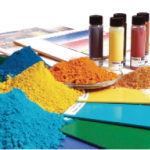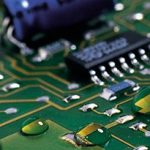Archives
now browsing by author
A summary of the key properties of each generic type of thermosetting powder coating

Industrial finishes are custom formulated to individual and end-user requirements. Successful selection depends on a close working relationship between users and suppliers. Selection should be strictly on a demonstrated film performance basis. This is because the film performance of a thermosetting powder coating is completely dependent on the bake it receives in a particular plant, on a particular substrate, with a particular degree of cleanliness, and type of metal pretreatment. Many specialties in the marketplace can cross over the guidelines.Read More …
Repair of parts and hanger stripping in powder coating
The methods of part repair after powder coating can be put into two categories : touch-up and recoat. Touch-up repair is appropriate when a small area of the coated part is not covered and is unable to meet finishing specifications. When hanger marks are not acceptable, touch-up is required. Touch-up also may be used to repair slight damage from handling, machining, or welding during assembly. Recoat is required when a part is rejected because of a large surface area defectRead More …
Why Powder Coating
ECONOMIC CONSIDERATIONS The excellence of the powder-coated finish is accompanied by substantial cost savings, when compared to liquid coating systems. Since powder contains no VOCs, air used to exhaust the powder spray booth can be recirculated directly to the plant, eliminating the cost of heating or cooling the makeup air. Ovens that cure solvent-based coatings must heat and exhaust huge volumes of air to ensure that the solvent fumes do not reach a potentially explosive level. With no solvent inRead More …
The market for electronic components protective coatings exceed US$20 billion In 2025

A new report from GlobalMarketInsight Inc. shows that by 2025, the market for protective coatings for electronic components will exceed $20 billion. Electronic component protective coatings are polymers used on printed circuit boards (PCBs) to electrically insulate and protect components from environmental stresses such as moisture, chemicals, dust, and debris. These coatings can be applied using spray techniques such as brushing, dipping, manual spraying or automatic spraying. Increased use of portable electronic products, increased demand for automotive electronics applications, andRead More …

 D5 Creation
D5 Creation